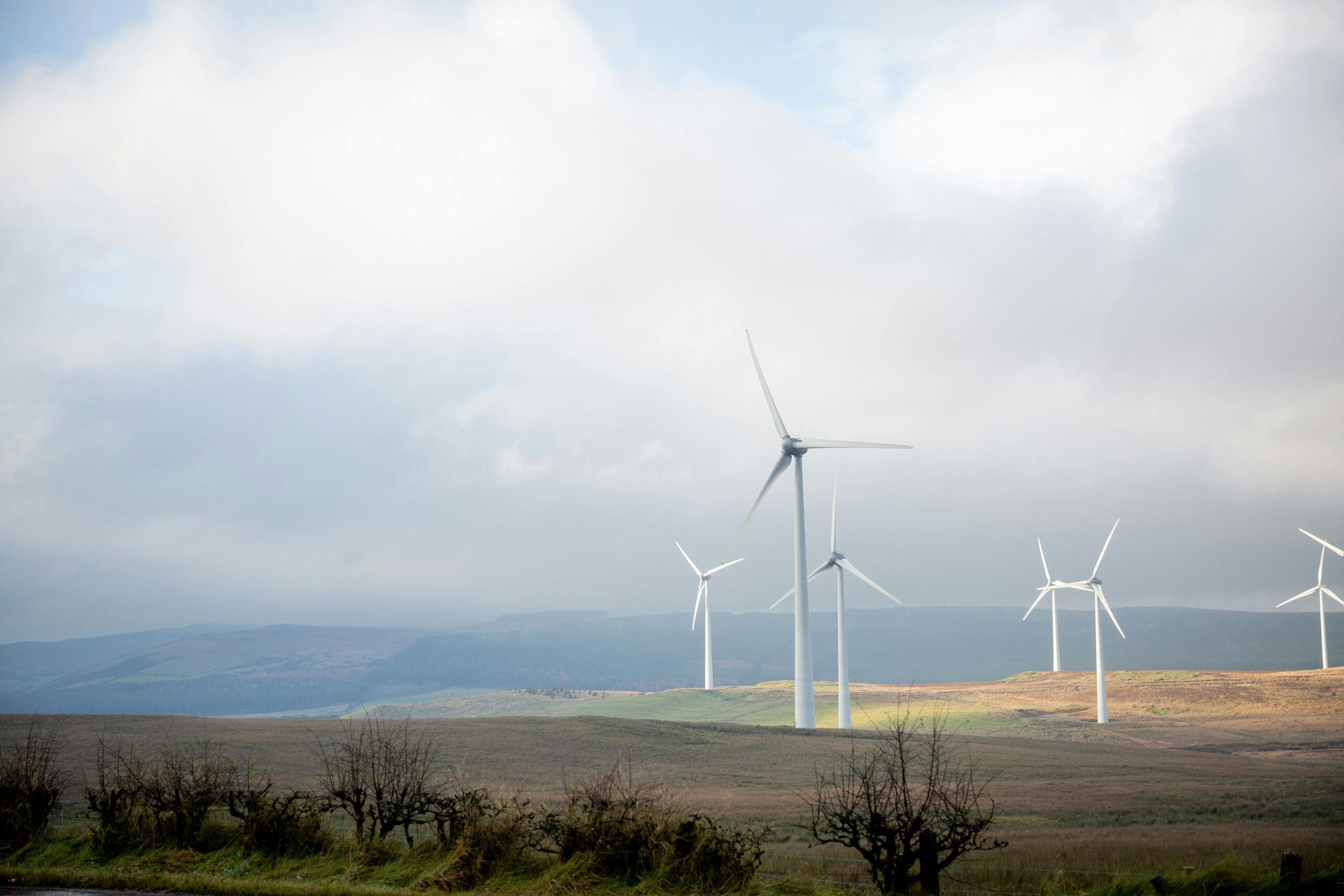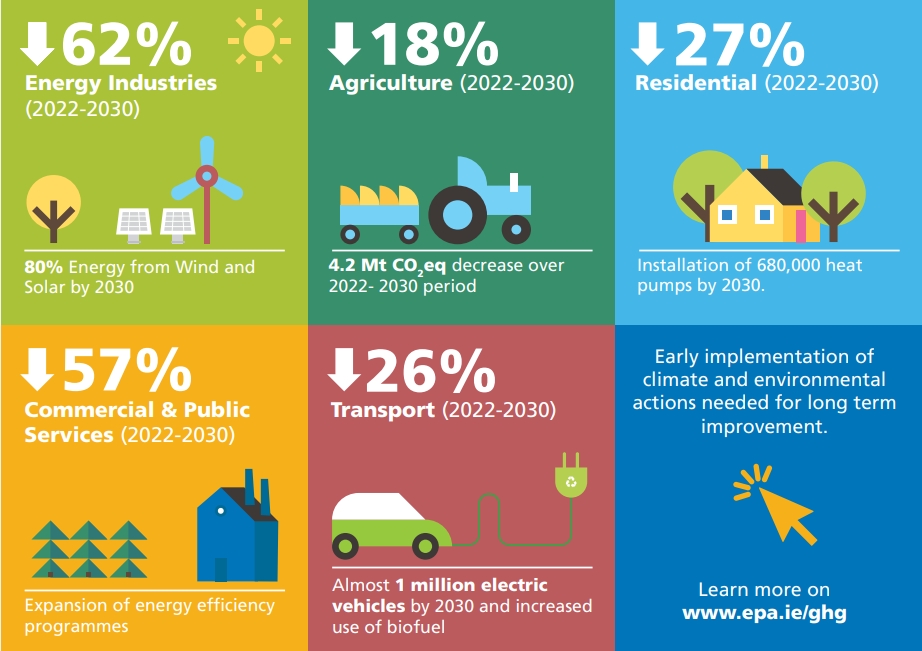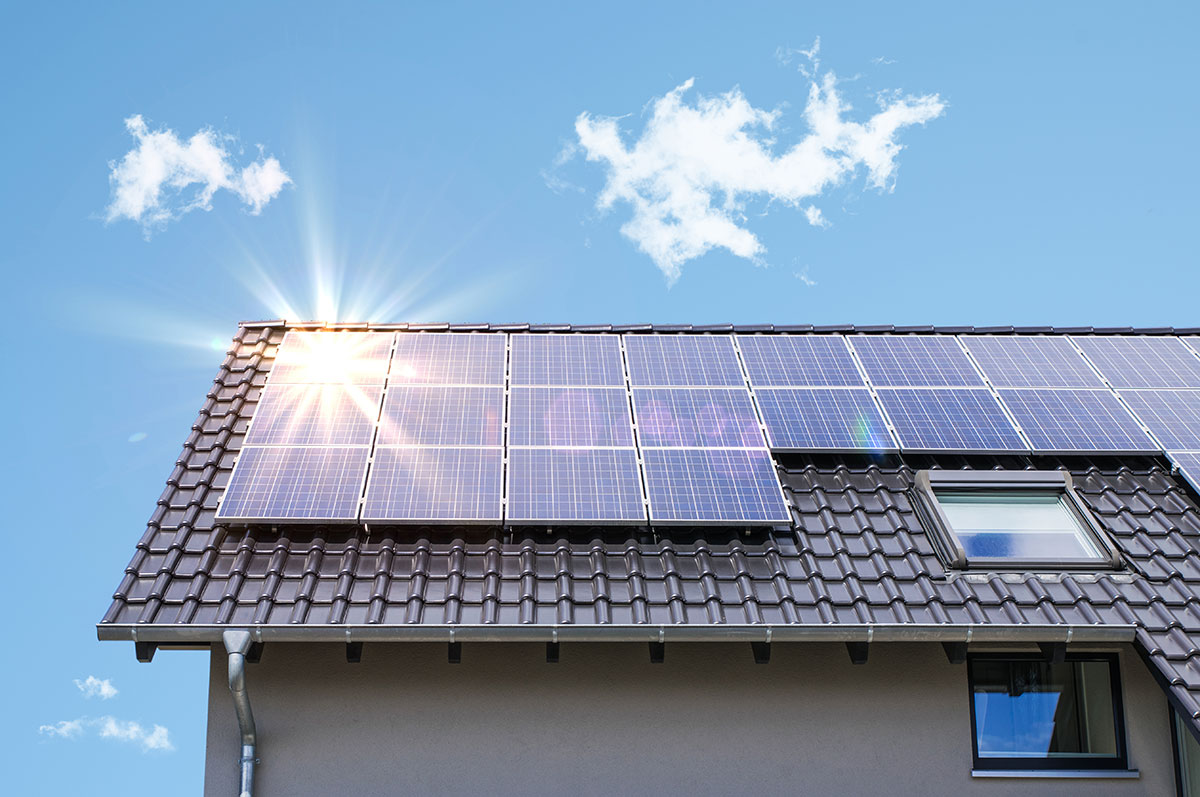
Ireland set to miss emissions targets by some distance

Written by
Michael Malone
Last edited
27/07/2024
Ireland is on course to miss its legally binding target of reducing greenhouse gas (GHG) emissions by 51% by 2030 by some distance, according to the Environmental Protection Agency.
The EPA has projected a reduction of up to 29% in greenhouse gas emissions by 2030, well below the goal set out in the Climate Act.
Nearly all sectors are set to exceed their planned emissions ceilings between 2025 and 2050, including electricity, transport and agriculture.
To achieve a reduction in GHG emissions of 29%, the EPA says a wide range of policies and plans across all sectors must be implemented.
The only sector which is projected to meet its sectoral emissions ceiling is residential buildings.

Laura Burke, Director General of the EPA, said that these projections show that “full delivery of all climate action plans and policies could deliver a 29% reduction in greenhouse gas emissions”.
“This is well short of both our European and National emission reduction targets and highlights the scale of effort required to achieve the required reductions across all sectors of our economy,” said Ms Burke.
“The key priority must be to translate the aspiration in our policies and plans to implementation on the ground.”
Ms Burke added that the transition to a low carbon society is building momentum in Ireland, and that we see this with more EVs on the roads, solar panels on rooftops and new farm practices being adopted.
But she said that we need to “speed up and scale up the transition”.
Projected GHG Emissions Reductions by Sector
The EPA’s greenhouse gas emissions projections published this week also broke down each sector, and outlined the measures which must be taken in each to achieve our targets.
Energy
There was a significant drop (24%) in emissions from electricity generation between 2022 and 2023 because of reduced fossil fuel usage and increased net importation of electricity from interconnectors.
With planned increases in renewable energy generation, the EPA projects a 62% reduction in emissions and over 80% renewable electricity generation by 2030.
Agriculture
In agriculture, the projections show a reduction in emissions by between 1% and 18% in the period 2022-2030.
Among the measures expected to decrease emissions are limits on nitrogen fertiliser usage and switching to different fertilisers.
Transport
The EPA says that emissions from the transport sector could be reduced by 26% from 2022-2030 if plans and policies are implemented.
These plans include almost 1 million electric vehicles on Irish roads by the end of the decade.
Road freight is expected to be the biggest source of greenhouse gas emissions in the transport sector by 2030.
Land use
Forestry reaching harvesting age is the driving force in the projected increase in emissions in this sector. The EPA says there could be an increase of between 23% and 99% from 2023-2030 as forestry becomes carbon source.
Increased afforestation and peatland rehabilitation are among the measures that are expected to reduce the extent of the emissions increase.
Author:

Michael Malone
SOLAR ENERGY EDITOR
Michael Malone is Solar Energy Editor at Energy Efficiency Ireland. He is committed to highlighting the benefits of solar PV for people across the island of Ireland, and is eager to clear up some misconceptions which linger among the Irish public regarding solar energy.
Author:

Michael Malone
Solar Energy Editor
Michael Malone is Solar Energy Editor at Energy Efficiency Ireland. He is committed to highlighting the benefits of solar PV for people across the island of Ireland, and is eager to clear up some misconceptions which linger among the Irish public regarding solar energy.
Ireland set to miss emissions targets by some distance
Written by
Michael Malone
Last edited
27/07/2024
Ireland is on course to miss its legally binding target of reducing greenhouse gas (GHG) emissions by 51% by 2030 by some distance, according to the Environmental Protection Agency.
The EPA has projected a reduction of up to 29% in greenhouse gas emissions by 2030, well below the goal set out in the Climate Act.
Nearly all sectors are set to exceed their planned emissions ceilings between 2025 and 2050, including electricity, transport and agriculture.
To achieve a reduction in GHG emissions of 29%, the EPA says a wide range of policies and plans across all sectors must be implemented.
The only sector which is projected to meet its sectoral emissions ceiling is residential buildings.

Laura Burke, Director General of the EPA, said that these projections show that “full delivery of all climate action plans and policies could deliver a 29% reduction in greenhouse gas emissions”.
“This is well short of both our European and National emission reduction targets and highlights the scale of effort required to achieve the required reductions across all sectors of our economy,” said Ms Burke.
“The key priority must be to translate the aspiration in our policies and plans to implementation on the ground.”
Ms Burke added that the transition to a low carbon society is building momentum in Ireland, and that we see this with more EVs on the roads, solar panels on rooftops and new farm practices being adopted.
But she said that we need to “speed up and scale up the transition”.
Projected GHG Emissions Reductions by Sector
The EPA’s greenhouse gas emissions projections published this week also broke down each sector, and outlined the measures which must be taken in each to achieve our targets.
Energy
There was a significant drop (24%) in emissions from electricity generation between 2022 and 2023 because of reduced fossil fuel usage and increased net importation of electricity from interconnectors.
With planned increases in renewable energy generation, the EPA projects a 62% reduction in emissions and over 80% renewable electricity generation by 2030.
Agriculture
In agriculture, the projections show a reduction in emissions by between 1% and 18% in the period 2022-2030.
Among the measures expected to decrease emissions are limits on nitrogen fertiliser usage and switching to different fertilisers.
Transport
The EPA says that emissions from the transport sector could be reduced by 26% from 2022-2030 if plans and policies are implemented.
These plans include almost 1 million electric vehicles on Irish roads by the end of the decade.
Road freight is expected to be the biggest source of greenhouse gas emissions in the transport sector by 2030.
Land use
Forestry reaching harvesting age is the driving force in the projected increase in emissions in this sector. The EPA says there could be an increase of between 23% and 99% from 2023-2030 as forestry becomes carbon source.
Increased afforestation and peatland rehabilitation are among the measures that are expected to reduce the extent of the emissions increase.
Author:

Michael Malone
SOLAR ENERGY EDITOR
Michael Malone is Solar Energy Editor at Energy Efficiency Ireland. He is committed to highlighting the benefits of solar PV for people across the island of Ireland, and is eager to clear up some misconceptions which linger among the Irish public regarding solar energy.
Author:

Michael Malone
Solar Energy Editor
Michael Malone is Solar Energy Editor at Energy Efficiency Ireland. He is committed to highlighting the benefits of solar PV for people across the island of Ireland, and is eager to clear up some misconceptions which linger among the Irish public regarding solar energy.





